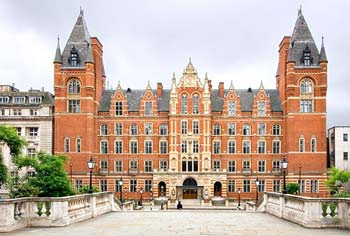 Poulenc and Hindemith Poulenc and Hindemith
Poulenc: Oboe sonata (1962)
Hindemith: Tuba Sonata (1955)
Kleine Kammermusik, op.24/2 (1922)
Sarah Turner – oboe, Oliver Browne – tuba, Susie Summers – piano
Mulberry Wind Quintet (Suzannah Watson – flute, Bethany Elliott – oboe, Hannah Murphy – clarinet, Grace Harvey – bassoon, Amy Innes, horn)
Poulenc: Elégie (1957)
Hindemith: Bassoon Sonata (1938)
Trumpet Sonata in B♭ (1939)
Trombone Sonata (1941)
Clarinet Sonata (1939)
Poulenc: Sextour (1932/1939)
Adam Howcroft – horn, Francesca Leonardi – piano, Tamsin Thorne – bassoon, Nick Wright – trumpet, Susie Summers – piano, Rupert Whitehead – trombone, Jonathan Cuthbert – piano, Kymia Kermani – clarinet, Belinda Jones – piano, Goodman Quartet (Hannah Grayson – flute, Vanessa Howells – oboe, Chris Goodman – clarinet, Sophie Crawford – bassoon) David Horwich – horn
Inner Parry Room, Royal College of Music, London: 3 March 2010
In the programme book, Susie Summers writes, “Perhaps the most important quality that Hindemith and Poulenc share is a good sense of humour and an appreciation of the absurd…” and she couldn’t be more correct for Hindemith is a very humourous composer, even if, occasionally, you have to look for the jokes! These two, very well planned, concerts must have opened many people’s ears to the delights of Hindemith, for here are four works which seldom see the inside of a concert hall, and they were well complemented by the music of Poulenc.
It was a good idea to bookend the concerts with Poulenc’s Oboe Sonata and Sextour for here we hear him at his most violent and wildly passionately, in the Sonata, and riotously comic in the Sextour. You couldn’t ask for a bigger contrast than between these two pieces, and they show both sides of Poulenc’s compositional spirit. In between came the short Elégie, written in memory of Denis Brain, who had died the previous year. However, whereas the Sonata matched its violence with resignation, the Elégie is a passionate outpouring concerned with the brevity of life. It is good to know that young musicians are playing these works for they don’t appear in concert programmes too often; even the Sextour, for all its delights, doesn’t seem to feature as often as it should.
Hindemith got the lion’s share of the recitals. The three brass sonatas may not be the best of his works for instrument and piano but there are always interesting things in them. The Tuba Sonata is notable for having a piano part written almost entirely in the treble so balancing the deep thoughts of the tuba. It’s a lovely idea and makes sense. The Trumpet Sonata, as you’d expect, is military in outlook, but the winner was the Clarinet Sonata with its marvelous jaunty march of a finale. Marvellous stuff. The Bassoon Sonata contains a surprise ending and, together with Kymia Kermani’s delightfully straight laced performance of the Clarinet work, Tamsin Thorne’s handling of the ending of the Bassoon Sonata was a real highlight.
All the performers displayed an understanding of the music they played, were in total control of their instruments and worked well in duo partnerships. Mention must also be made of the two ensembles which worked well together and showed an obvious enjoyment in collective performance.
The Inner Parry Room is a small performance space, perfect for this kind of show, and I hope to return there in the near future for its intimate atmosphere helped with the presentation of this relatively unknown music.
Bob Briggs
|



